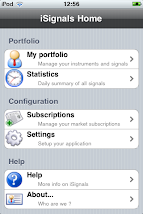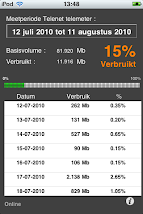The idea behind cloud computing is that you have mega-datacenters out of which you run applications (f.e. Google Apps), so lowering the cost for companies (the cost of owning an own IT department).
Too me this is again some marketing hype (computer vendors trying to sell services).
I can agree that some basic services can be offered over the net, but complex applications ? No never.
Basic services like storage over the Net seems logical too me (I use box.net for example). But apart from that ? Will you use Amazon SimpleDB for example ?
Amazon SimpleDB offers you a (simple) database over the Internet, but what is the use of it ? Everybody knows that making a database application performant enough is already a big challenge in a total controlled environment. How can you ever make it performant when your database is somewhere sitting on a remote server and you only have access to it over the Internet (and behind a firewall)?
In my company for example we have a 200GigaBit connection to our private datacenter (over a private network) and still we had to invest in very expensive routers with caching.
And not to mention the next level of Cloud computing : applications over the Internet.
If you have ever used Google Apps and Google Docs for example, then you understand that those applications are miles (not to say lightyears) away from suites like NeoOffice or MSOffice.
And of course don't forget things like security, privacy, reliability etc.
Think for yourself : would you put all your company (or private ) data on to the servers of Amazon,Google, IBM or Microsoft ?










